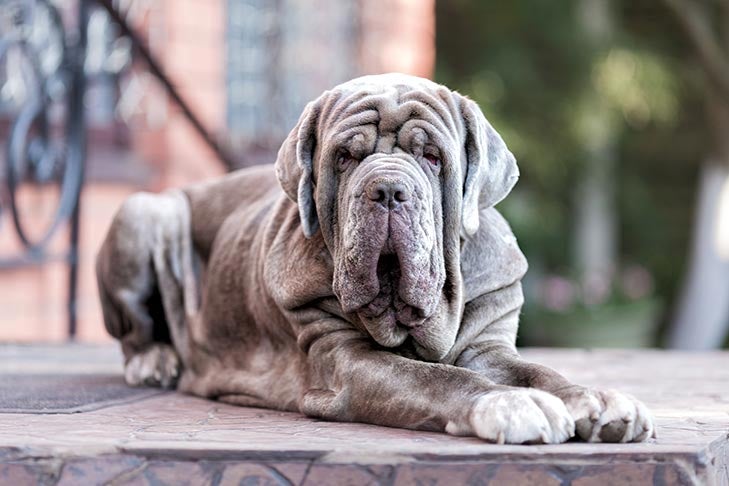There’s no mistaking the low menacing rumble of a dog’s growl. Dogs use this vocalization in all kinds of situations from guarding their favorite bone to playing tug-of-war. But what’s the underlying motivation for growling? Is it aggression, fear, bossiness, or something else? And what can you do about it? Read on to learn why dogs growl, what it means, and how to handle it.
Play Growls
Just like barking, growling is a form of canine communication that has many triggers. It all depends on the situation and the dog. In fact, some growling is positive. Many dogs grunt and grumble during playtime because they’re having fun. Have you ever seen two dogs wrestling? Chances are you heard some growling. You might have thought that meant the roughhousing had gone too far, but it was likely all part of the game.
Growling during play doesn’t mean your dog is aggressive. It simply means they’re having a great time. Your dog might even growl during a particularly pleasing cuddle or patting session. Many dogs growl talk to communicate contentment or as a greeting. These types of growls simply indicate happiness.

Warning Growls
Of course, other growls have an entirely different meaning. A dog might growl to threaten another dog, or it might be a response to feeling cornered. Growling is also a common symptom of resource guarding. An injured dog will often growl to keep others at bay. In these cases, and more, growling indicates something is bothering your dog.
Unlike play and talk growls, you can think of these growls as stress growls. They tell you your dog is uncomfortable. And that’s invaluable. Now you can intervene on your dog’s behalf and change the situation before your dog feels the need to resort to more serious measures like biting.
What Stress Growling Means
Stress growls are a warning signal. Their purpose is to tell others to back off before the dog is forced to take further action. Most dogs don’t want to attack or bite. They use growling to prevent the situation from escalating. And that gives growls great value. A dog that attacks without warning is incredibly dangerous. Appreciate growls for the insight they give into your dog’s state of mind and for the time they give you to intervene, help your dog, and prevent injury.
Understanding Different Growls
How can you tell the difference between happy growls and stress growls? Look at body language. For instance, if your dog is giving you a submissive grin or play bows, then it’s likely any growling is just fine. If your dog seems stiff and is staring with a hard expression, that growl is serious.
When you know a dog well, sometimes the tone of the growl can help too. A loud, higher-pitched growl might tell you something different from a soft, lower-pitched one. However, when in doubt, act as if the growl is a threat. Especially with dogs you aren’t friends with, it’s better to mistakenly end a fun game than misjudge and wind up injured. Particularly with young children, teach them to treat all growls with caution.

Don’t Punish Growling
Hopefully, you now recognize that you should never correct growling. It’s either benign or a symptom of stress in your dog. If you punish your dog for growling, you will only inhibit growling. You won’t have done anything to address the underlying issue. For example, punishing your dog for growling in the presence of other dogs will stop the growling. However, your dog will still feel uncomfortable around other dogs. Even worse, the lack of growling might fool you into thinking otherwise. Meanwhile, your dog is still stressed and just might snap without the benefit of a warning.
Unfortunately, when you punish your dog for growling, you also exacerbate the underlying issue. For example, if your dog growls at another dog and you punish the growling, your dog will likely think the other dog caused your negative action. Now your dog’s discomfort will be even stronger. After all, other dogs bring about your anger.
How to Handle Growling
The most effective way to deal with growling is to determine what’s bothering your dog and then treat that underlying issue. First, in the immediate moment, do whatever you can to change the situation to suit your dog. If your pet is stressed by the presence of another dog, cross the street, leave the dog park, or whatever you need to do to help your dog relax. If it’s coming too close to your dog’s bone, back off and let them be.
Next, determine what specifically led to the growling. For the time being, if you can eliminate that situation from your dog’s life, do so. For example, if other dogs stress your dog, don’t take them to the dog park. If your dog guards their bones, stop giving them bones, and so on.
Finally, permanently address the growling with a behavior modification program. Techniques such as desensitization and counterconditioning can change your dog’s attitude toward the underlying issue that caused the growling in the first place. For your dog’s sake and your own safety, you need to help your dog become comfortable with the things that once caused them so much stress. These aren’t overnight solutions and might require the assistance of a dog trainer or animal behaviorist. But if you manage your dog’s environment while you help them become comfortable with their stressors, ideally, they will never feel the need to stress growl again. But if they do, now you’ll know how to handle it.

